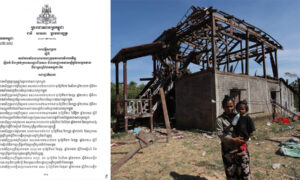New York, United States
Boeing plans on Tuesday its last ever commercial delivery of a 747, closing a chapter in aviation history.
The “jumbo jet” democratized plane travel as the first two-aisle plane, part of a distinctive legacy that has involved world leaders and landmark moments.
– The 747 in numbers –
Production began in 1967. Some 50,000 mechanics, engineers and administrative workers were involved in a project that took about 16 months.
A giant plane needs a giant factory, and Boeing built one in Everett, Washington, in the northwestern United States. The complex contains the largest building in the world by volume.
A 747 flew for the first time on February 9, 1969 and entered into service for Pan American Airways on January 21, 1970 for a trip between New York and London.
Boeing has built 1,574 747 jets for more than 100 customers. The plane can potentially carry more than 600 passengers although it has been configured for fewer.
The final version of the plane, the 747-8, measures 63 feet 6 inches, the height of an average six story city building, according to Boeing.
It is capable of traveling the length of three FIFA football fields in one second.
– Major duties –
The 747 is heavily recognized as the US presidential plane, having served every White House inhabitant since 1990. This group consists of George Bush, Bill Clinton, George W. Bush, Barack Obama, Donald Trump and Joe Biden.
Other assignments have included supporting NASA in the 1970s, when two 747s were modified to transport space shuttles.
Boeing has also made use of the 747 for its own purposes, designing a special version to transport major parts for its 787 Dreamliner, a descendant of the 747 that has played a role in retiring it.
– A spot in history –
In 1979, Jean-Paul II flew an Aer Lingus 747 for the first papal visit to Ireland, while in the same year Iran’s Ayatollah Khomeini took an Air France 747 to return from exile.
The deadliest accidents involving the jet include the 1977 incident in which two collided into each other at the Tenerife airport on the Spanish island, killing 583 people. In August 1985, 520 people died in a Japan Airlines plane crash between Tokyo and Osaka.
In May 1991, a 747 operated by Israel’s El-Al, having removed the seats, took some 1,100 passengers in an evacuation of Ethiopian Jews to Israel.
© Agence France-Presse




























